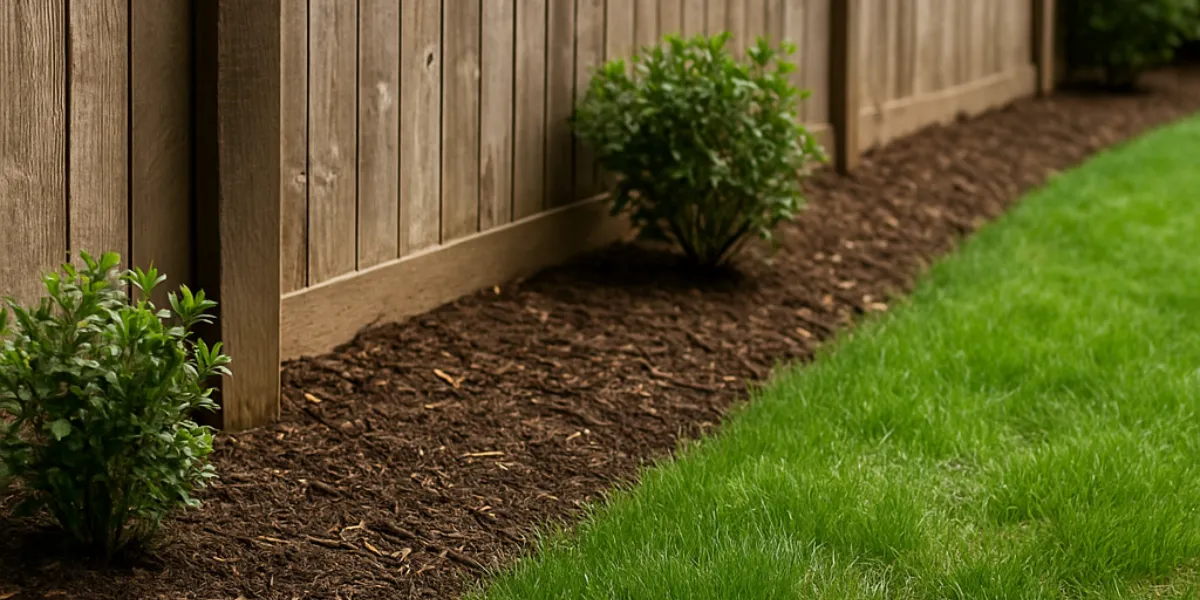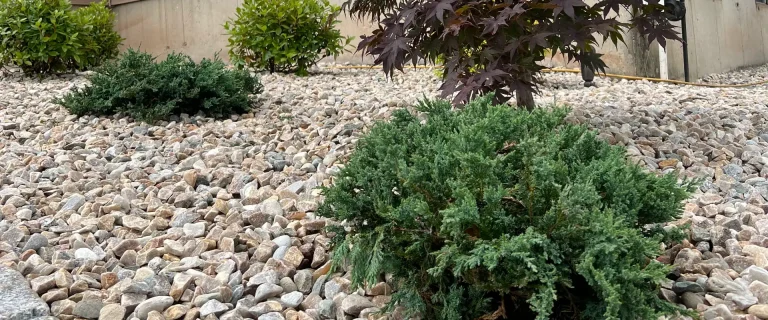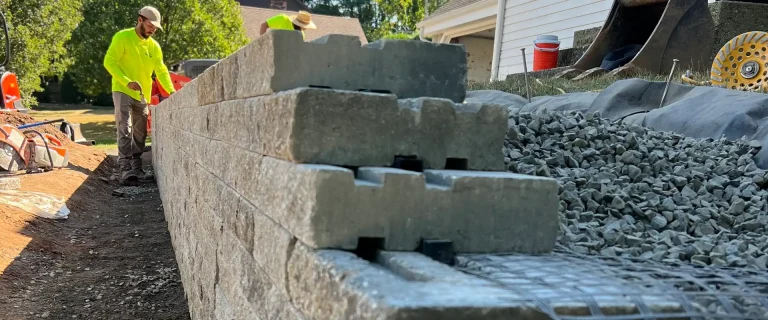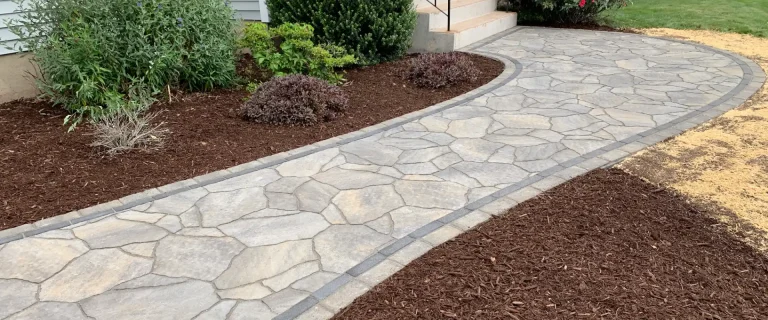What to Do When Lawn Won’t Grow Along a Fence Line

If you're frustrated by thin or bare grass along your fence, you're not alone. Many homeowners in Rocky Hill, Glastonbury, and other areas of Central Connecticut struggle with stubborn patches of lawn that simply won’t fill in. The good news? With the right strategies—and help from the team at Scenic Landscaping—you can turn that neglected edge into a lush, healthy part of your yard.
This guide breaks down the most common causes of fence line lawn problems and how to fix them effectively.
Why grass struggles to grow near fences
If you’ve noticed that grass along your fence line looks thin, patchy, or won’t grow at all, you’re not alone. This is a common problem in residential landscapes throughout Rocky Hill, Glastonbury, and surrounding Connecticut towns. The issue isn’t always poor maintenance—it’s often caused by environmental and structural challenges that make fence-adjacent areas less hospitable to turfgrass.
At Scenic Landscaping, we evaluate every yard carefully to determine why grass is failing and which targeted solution will provide lasting results.
Here are the most common culprits we see:
1. Lack of sunlight
One of the biggest obstacles to growing healthy grass near fences is shade. Tall fences—especially those made from wood or vinyl—can block a significant amount of sunlight throughout the day. In narrow side yards or areas with neighboring trees, the problem is compounded.
-
-
- Reduced sunlight = reduced photosynthesis, which weakens the grass’s ability to grow thick and green
- Shade-tolerant grasses like fine fescues may survive, but even they struggle in deep or persistent shadow
- Sun patterns shift seasonally, meaning an area that received morning sun in spring may be shaded in summer
-
If your fence faces north or runs parallel to a tall tree line, this could be the root cause of poor grass performance.
2. Soil compaction
Fence lines are often unintentionally compacted from regular use and maintenance activities. Repeated foot traffic, wheelbarrow movement, and mower tires passing along the edge compress the soil—making it tough for grass roots to penetrate.
-
-
- Compacted soil lacks aeration, meaning less oxygen and water reach the root zone
- Poor drainage in these areas causes pooling or runoff instead of absorption
- Grass becomes thin, pale, or completely absent along compacted strips
-
Without correction, compacted soil essentially becomes a barrier to healthy growth.
3. Water competition
It’s not just shade and compaction working against your lawn—fence-adjacent soil often suffers from water stress as well.
-
-
- Nearby trees, shrubs, or perennial beds can outcompete grass roots for water
- Fences built with gravel bases or concrete footings may reduce water infiltration altogether
- Sloped yards or sandy soils cause moisture to drain quickly from the fence line
-
To make matters worse, many sprinkler systems miss these edge zones, either due to poor coverage or obstructed spray paths.
4. Mowing and maintenance challenges
Even the most carefully maintained lawn can show wear near fences—simply because they’re difficult to mow and trim properly.
-
-
- Lawn mowers may not reach close enough, especially along uneven fence bottoms
- String trimmers, if used too aggressively, can scalp or damage grass crowns
- Inconsistent mowing height and technique can weaken already stressed grass
-
Over time, the combination of poor cutting practices and physical damage takes a toll—leading to thin, uneven patches that refuse to fill in.
Fixes for bare or thinning grass along fences
If you’re tired of fighting with stubborn fence line grass, you’re not alone—and you're not out of options. At Scenic Landscaping, we’ve helped countless homeowners throughout Rocky Hill, Berlin, West Hartford, and surrounding towns transform these overlooked strips into healthy, vibrant features of their yard.
Whether the problem is too much shade, poor soil, or irrigation issues, our approach is tailored to your specific conditions. Here's how we solve it:
1. Assess light levels and choose the right grass
Sunlight plays a huge role in determining which type of grass—or groundcover—will succeed along your fence.
-
-
- For areas with partial shade, we recommend fine fescue or turf-type tall fescue, which are more tolerant of low-light conditions.
- If the area receives fewer than four hours of sunlight per day, traditional grass may never thrive. In these cases, Scenic Landscaping may recommend replacing turf with low-maintenance mulch, shade-loving moss, or decorative gravel to improve both appearance and performance.
-
Our team will assess the site and help you choose the most sustainable solution for your lighting conditions and aesthetic preferences.
2. Loosen compacted soil and enrich it
Compacted soil is one of the most common reasons grass refuses to grow near fences—and it’s also one of the easiest to fix with the right tools.
-
-
- We perform core aeration to reduce soil compaction and allow water, air, and nutrients to reach grassroots.
- In especially poor or sandy areas, we add compost, screened loam, or other soil amendments to improve texture and fertility.
- For ongoing success, we may recommend mulch installation to regulate moisture and protect newly seeded areas.
-
This process creates a healthy foundation for future growth and long-term results.
3. Improve watering consistency
Fence line grass is often under-watered—not because you’re neglecting it, but because sprinkler heads aren’t reaching those narrow, hard-to-hit zones.
-
-
- Scenic Landscaping can evaluate and adjust your irrigation system to provide better coverage and even distribution.
- We often install drip irrigation lines along fence borders to ensure slow, targeted moisture without oversaturating surrounding turf.
- For larger landscapes, we offer custom irrigation solutions that tie seamlessly into your yard’s existing layout.
-
Consistent watering can make a dramatic difference, especially during the hot, dry summer months in Connecticut.
4. Reseed or lay fresh sod
Once sunlight, soil, and watering conditions are corrected, it’s time to repair the grass.
-
-
- We use premium, region-specific seed blends tailored to Connecticut's climate and your specific growing conditions.
- If you need faster or more uniform results—especially in front yards or along high-traffic areas—we may recommend sod installation for immediate coverage.
- Our crew preps and levels the area thoroughly to ensure a clean, professional finish.
-
This step restores curb appeal and creates a seamless lawn edge that integrates beautifully with your landscape.
5. Install landscape features where grass won’t grow
Sometimes, the best fix isn’t grass at all. If your fence line is simply too shady, dry, or compacted to support turf, we’ll help you rethink the space with alternative design features that look great and reduce maintenance.
Popular solutions from Scenic Landscaping include:
-
-
- Mulch beds with native, shade-tolerant plants or ornamental grasses
- Decorative stone borders to define the space and reduce mowing challenges
- Paver walkways or edging that create visual structure and prevent erosion
- Low-voltage landscape lighting to highlight your fence line and improve nighttime safety
-
These enhancements not only solve the issue—they turn an eyesore into an asset, adding value and style to your yard.
Case study: Transforming a struggling lawn in Wethersfield
A homeowner in Wethersfield had a privacy fence running along the side of their property, but the grass beneath it had become patchy and dry. After a consultation, our team determined the soil was compacted and starved for light and water.
We performed aeration, amended the soil with compost, installed a custom drip irrigation system, and reseeded with a fine fescue blend. In shady areas with no hope for grass, we replaced turf with mulch beds and native shrubs to soften the edges and improve overall curb appeal.
Just a few weeks later, the lawn was filling in beautifully—and maintenance was easier than ever.
Why choose Scenic Landscaping for lawn repair?
At Scenic Landscaping, we take a holistic approach to turf issues. Instead of temporary fixes, we focus on long-term solutions that improve the health, appearance, and usability of your entire yard.
Clients choose us because we offer:
-
- Deep knowledge of Connecticut soil and climate
- Full-service solutions, from aeration to sod installation to landscape design
- A track record of transforming problem areas into highlights
- Clean, respectful crews who treat your property with care
If you're tired of looking at that stubborn strip along your fence, let us help you fix it the right way.
We proudly serve homeowners in:
-
- Rocky Hill
- Glastonbury
- Wethersfield
- Newington
- Berlin
- Cromwell
- Middletown
- West Hartford
- Greater Hartford County and surrounding areas
Get rid of bare patches—once and for all
Ready to fix that trouble spot along your fence line? Call Scenic Landscaping at (860) 656-7440 or request your free estimate online. We’ll evaluate your yard and provide tailored solutions that restore the health and beauty of your lawn—serving Rocky Hill and surrounding towns with expert care.









